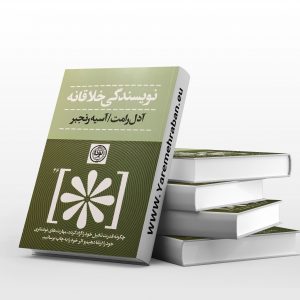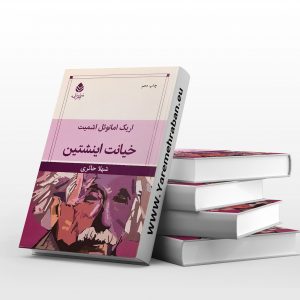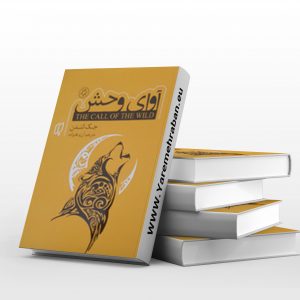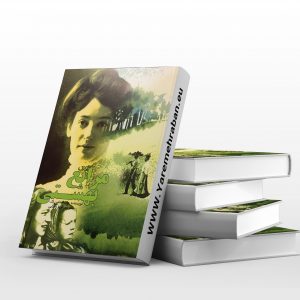Description
The Alchemy of Happiness is the work of Imam Mohammad Ghazali
Persian literature has many masterpieces in the field of ethics and mysticism, each of which teaches moral and doctrinal principles, manners, epistemological, mystical and ascetic points in a different way and with a different prose. From “Golestan Saadi” to “Qaboosnameh” and … but one of the important points in choosing to read these works according to the time and language of the ages, is the simplicity and fluency of their prose.
The book Alchemy of Happiness written by Imam Mohammad Ghazali is one of the masterpieces of the fifth century that teaches us the principles of life through beautiful and fluent prose.
About the book Alchemy of Happiness
Alchemy of Happiness is a valuable work by Abu Hamed Imam Mohammad Ghazali Tusi, who wrote it in Persian in the last years of the fifth century AH.
Alchemy of Happiness is one of the masterpieces of Persian prose that is written in two volumes and contains moral and mystical concepts. This work is in fact a summary of the great book “Revival of the Sciences of Religion” or “Revival of the Sciences” which Ghazali wrote in Arabic and its volume is twice that of the Alchemy of Happiness. Many great people have praised the book “Revival of the Sciences of Religion” and said: “If the Islamic sciences are destroyed, everyone can be taken out of the book” Revival of the Sciences “.
The book Alchemy of Happiness in Iran and the book “Revival of Sciences” have been accepted both in Iran and in the Islamic world. In both works, the author presents moral and Islamic teachings based on the knowledge of human knowledge. Of course, it should not be forgotten that the book Alchemy of Happiness is not a summary of the book “Revival of Sciences” but a Persian version.
Although the book Alchemy of Happiness is about nine hundred years old, the beautiful compositions and terms of this book are among the precious treasures of the word Dari, which is still alive and well. Many scholars have called the book Alchemy of Happiness an “Islamic and mystical encyclopedia.”

Ghazali prose and style in the book Alchemy of Happiness
Alchemy of Happiness in terms of eloquence, eloquence and fluency of prose is one of the works that is unique in Persian. Many great men have said of the book’s style and prose: “Perhaps few writers of his kind can be found whose style is so precise and yet so rich. “Metaphors and allegories wash away his major books, such as The Revival of the Sciences of Religion and The Alchemy of Happiness, in a wave of poetic grace.”
Al-Ghazali wrote the book Alchemy of Happiness in prose by Sufism. In fact, Sufi prose is a melodic prose that crystallizes the musical effects in prose with the elements of repetition, rhyme and pun. Imam al-Ghazali has used all these elements in phonetic coordination and composition of rhythmic sentences in writing Alchemy of Happiness. The orderly syllabic arrangement of al-Ghazali’s writing makes his prose more like poetry. Gholam-Hossein Yousefi says in this regard: “Al-Ghazali’s prose is sometimes a poetic expression, a poet who uses a pen to express his findings.”
Due to the use of didactic themes in philosophical, jurisprudential, etc., the author uses his words intermittently and regularly in a melodic form so that the influence of his words is pleasing to the reader. Dr. Abdolhossein Zarrinkoob considers this style of Ghazali’s writing to be influenced by his poetic taste and talent and says: “His poetic passion also influenced his writing style, and gave a special taste and sweetness to his prose.”
The use of ancient words and pleasant allegorical terms is a prominent feature that has added to the rhetoric of al-Ghazali prose, so that not only are these words usable today, but a group of writers and intellectuals still use these words and phrases for their literary texts over the years. use.
For example, words such as “to say from the heart” meaning from the heart and soul, which is stated in the book Alchemy of Happiness in this way: “If they say eat, he knows that they do not say from the heart, do not eat and eat” Used today.
Al-Ghazali’s metaphors and metaphors in the Alchemy of Happiness make the world of his works somewhat similar to poets such as Rumi. As all the elements used in the alchemy of happiness have a soul. For example, the author says at the beginning of his prose: “And Ala, and glory and value are his attributes.” In this phrase, the use of elements of nature, rhyme and phonology has added to the beauty of Ghazali’s words.
For this reason, the Alchemy of Happiness can be considered a masterpiece of delicate and simple Persian prose that has all the characteristics of a magnificent moral work.
Take a look at the chapters of the book Alchemy of Happiness
Al-Ghazali has written the Alchemy of Happiness in four titles: self-knowledge, theology, worldliness and the hereafter. Like the revival of science, he has categorized the text of this book into four pillars. Two outer pillars and two inner pillars.
The apparent pillar includes “worship” and “transactions”. “Worship” includes the teachings of obeying the command of the Almighty, and “transactions” are about teaching the etiquette of keeping in motion and residence and livelihood.
The inner pillar includes “deaths” and “savings”. In “Deaths”, the author emphasizes the avoidance of bad morals such as anger and jealousy, and in the section “Savior”, he encourages man to adorn his heart with good morals such as patience and love.
In the text of the book Alchemy of Happiness, each pillar of the book contains ten principles, each of which is divided into several sections and sub-sections. Al-Ghazali in every principle presents the teachings of Islam and ethics to the reader in the heart of life.
Correction of the book Alchemy of Happiness
The book Alchemy of Happiness has been published in Iran with two famous corrections. Professor “Ahmad Aram” corrected this book for the first time in 1319 based on 4 manuscripts. However, due to the availability of better versions and the possibility of further research, this work needed another correction, and contemporary researchers were eager to do so, but in the end, this success went to “Seyyed Hossein Khadiojam”, who was able to do it with full competence and skill. Khadiojam published the correction of the first volume of the book in 1975 and the correction of the second volume in 1982 based on six manuscripts.
One of the most important works of “Khadiojam” is the correction and printing of the translation of Ghazali’s book Revival of Sciences of Religion into Persian. “Khadiojam” published this work after reviewing and confronting 14 different versions of this work after 15 years of time. Khadijoujam’s effort, acquaintance and familiarity with Ghazali’s thoughts in the alchemy of happiness are also evident in these works.
In 2010, the book Alchemy of Happiness was published by Negah Publications with the introduction and efforts of “Bahauddin Khorramshahi”. “Bahا’u’ll خh Khorramshahi”; He is a writer, memorizer, Quran researcher and university professor. In this version of the book Alchemy of Happiness, he has tried to explain some difficult words in a concise and correct way, while presenting a corrected and correct text, and has translated some words into Arabic to make it easier to read al-Ghazali prose. In this version, the verses and hadiths of the book Alchemy of Happiness have been interpreted by Khorramshahi.
“Alchemy of Happiness” is one of the most important works of Abu Hamid Imam Mohammad Ghazali Tusi (450-505 AH), one of the prominent Islamic jurists. Bahا’u’ll .h Khorramshahi (1324), an Islamic scholar, has also written an introduction to this book. This book consists of four sections (quarters) and in each of them it describes the Muslim elements.
These four sections are: worship, transactions, deaths and saviors. The quarter of worship consists of “ten books” (= chapter or long principle) as follows: 1) the book of knowledge, 2) the book of rules of beliefs, 3) the book of secrets of purity, 4) the secrets of prayer, 5) the secrets of zakat, 6) the secrets Fasting, 7) Secrets of Hajj, 8) Etiquettes of reciting the Qur’an, 9) Remembrance and prayers, 10) Order of recitation and times of each. A quarter of habits, which consists of ten books
: 1) The book of the beginning of eating, 2) The book of marriage etiquette, 3) The rules of business, 4) The lawful and the unlawful, 5) The etiquette of talking and associating with any group of people, 6) Isolation, 7) Travel etiquette, 8) Listening and ecstasy, 9) Enjoining the good and forbidding the evil, 10) The manners and morals of the Prophet (PBUH). A quarter of deaths, which consists of ten books: 1) Description of the wonders of the heart, 2) Austerity, 3) The plagues of two lusts: lust of the abdomen and sexual lust, 4) The plagues of the tongue, 5) The plagues of anger, resentment and envy, 6) The condemnation of the world , 7) condemnation of greed and avarice, 8) condemnation of arrogance, 9) condemnation of arrogance and selfishness, 10) condemnation of pride. Quarter of salvation (= liberation and opening) which consists of ten books: 1) the book of repentance, 2) the book of patience and gratitude, 3) fear and hope (= fear and hope), 4) poverty and asceticism, 5) monotheism and Trust, 6) love, enthusiasm, kindness and contentment, 7) intention, truthfulness and sincerity, 8) meditation and calculation, 9) thinking, 10) mortality. Each of these “books” or its ten chapters is divided into several sections and sub-sections in the text of the book.
1- Introducing the book on YouTube
2- Introducing the book in Aparat














Reviews
There are no reviews yet.